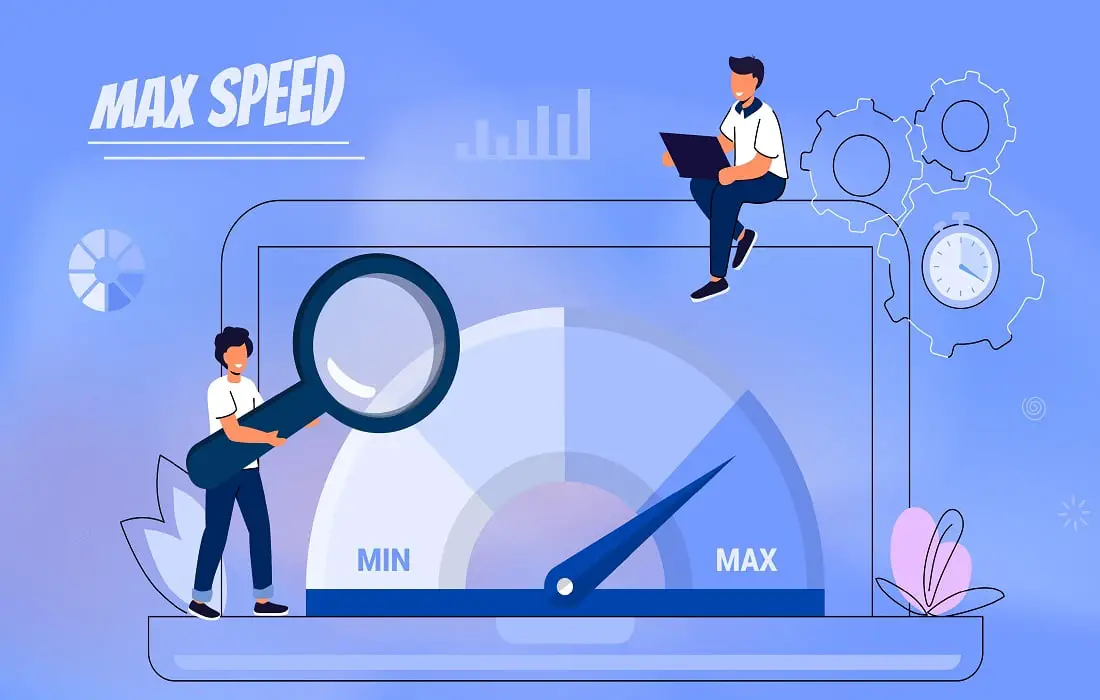Nobody likes to wait for a website that’s slow to load. In today’s fast-paced digital landscape, where every second counts and user attention is fleeting, the performance of your website is crucial to your online success.
But how do you increase your site speed? Here are some tips to help you boost your site speed and keep your visitors engaged.
Tips to Improve Your Website Speed
Your website’s loading speed is dependent on a few key factors:
1. Boost Your Site Speed with Image Optimisation
Images add life to your website, but if not optimised properly, they can also slow it down. Here’s how to get the balance right:
- Use Compressed Images: Tools like Photoshop or free online image compressors such as TinyPNG or Compress JPEG can drastically reduce the file size of your images without compromising their quality. This will ensure your site loads faster, providing a better user experience.
- Choose The Right Format: Different image formats have different strengths. For instance, JPEG is ideal for photographs due to its ability to maintain high quality even after compression, while PNG is excellent for logos and text as it supports transparency.
- Use Responsive Images: These are images that adjust to the screen size of the user, which can greatly improve load times on mobile devices. By including multiple versions of an image in different sizes, your website can automatically select the most appropriate one based on the viewer’s device.
- Lazy Loading: Another approach to image optimisation is lazy loading. This technique only loads images when they’re about to come into the viewer’s screen view, which can significantly speed up initial page loading times.
2. Streamline Your Website by Cutting Down on HTTP Requests
Every element on your website, from images to fonts, scripts and style sheets, needs a separate HTTP request for loading. The more requests your site makes, the slower it becomes. To optimize this, it’s best to:
- Combine files: This can significantly reduce the number of HTTP requests.
- Use CSS instead of images where possible: CSS loads faster and can often achieve the same visual effect.
- Keep your scripts lean: The smaller your JavaScript and CSS files, the quicker they’ll load.
3. Boost Efficiency with Browser HTTP Caching
Imagine a scenario where parts of your website are stored on a visitor’s device, leading to faster loading on subsequent visits.
You can make this a reality by enabling browser caching through your website’s .htaccess file or seamlessly integrating it with your CMS, such as WordPress.
4. Say Goodbye to Render-Blocking JavaScript
Render-blocking JavaScript can be the nemesis of a fast-loading page. To tackle this:
- Inline small scripts: Instead of forcing a separate HTTP request for a tiny bit of code, place it directly in your HTML document.
- Defer larger scripts: This means they’ll load after the rest of your page, preventing them from holding up anything else.
5. Keep External Scripts to a Minimum for Swift Performance
External scripts, such as ads, font loaders, and lead tracking, can act as speed bumps. Keep these to a bare minimum and always prioritise your site’s performance and user experience.
6. Embrace Efficiency with Fewer Redirects
Each redirect triggers an additional HTTP request, causing delays in your site’s loading speed. Try to limit redirects as much as possible, especially on mobile devices where speed is crucial.
7. Minify Your CSS and JavaScript for a Sleeker Site
Minification removes unnecessary characters from your code. This can include white space, comments, or unused code. There are many tools available online that can help you minify your code and speed up your site.
8. Leverage Third-Party Services for Critical Website Functions
Third-party services can handle some of the heavy lifting for your site. For instance, a Content Delivery Network (CDN) can serve your site from servers around the world, speeding up load times for visitors no matter where they are.
A CDN distributes your site’s content across servers around the world. This means when a visitor accesses your site, the CDN delivers the content from the server closest to them, significantly speeding up load times.
Here are some other critical functions that third-party services can assist with:
- Customer Support Tools: You can install various platforms to help manage your customer support function, ensuring timely, professional responses.
- Email Marketing: There are plenty of email platforms available online that offer robust email marketing services, allowing you to reach out to your audience more effectively.
- Payment Processing: Your website can provide secure, seamless payment processing with an e-payment or eCommerce system.
- Analytics and SEO Tools: Third-party services like Google Analytics and SEMrush provide essential data about your website’s performance and SEO status.
- Security Services: Web application firewalls and other security features can protect your website from threats.

Improve Your Website Speed Today
Remember, a fast website isn’t just nice to have – it’s essential. By implementing these strategies, you can increase your site speed, improve user experience, and boost your online success.
